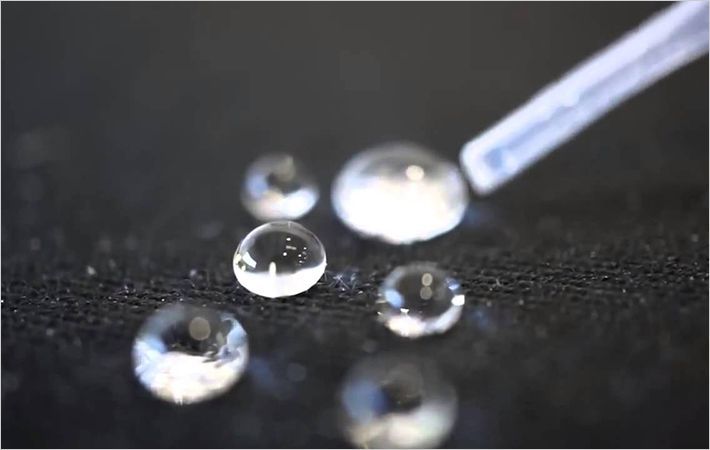Researchers at MIT have succeeded in making a fine thread that functions as a diode, a device at the heart of modern electronics. This feat — made possible by a new approach to a type of fiber manufacturing known as fiber drawing — could open up possibilities for fabricating a wide variety of electronic and photonic devices within composite fibers, using a variety of materials.
Fiber-drawing techniques are used to produce the optical fibers behind much of today's broadband communications, but these techniques have been limited to materials that can partially melt and stretch like taffy at the temperatures being used for drawing the fibers. The new work demonstrates a way of synthesizing new materials during the fiber-making process, including materials whose melting points are far higher than the temperatures used to process the fibers. The simple proof-of-concept demonstration carried out by the MIT researchers could open the door to a wide array of sophisticated devices based on composite fibers, they say.Researchers at MIT have succeeded in making a fine thread that functions as a diode, a device at the heart of modern electronics. This feat — made possible by a new approach to a type of fiber #
The findings, part of a doctoral research project in materials science by Nicholas Orf, have been published in the journal Proceedings of the National Academy of Sciences. The paper was co-authored by Orf (now a postdoc at MIT); John Joannopoulos, the Francis Wright Davis Professor of Physics; Yoel Fink, associate professor; Marc Baldo, associate professor; Ofer Shapira, a research scientist in the Research Laboratory of Electronics; postdoc Fabien Sorin; and Sylvain Danto, who was a postdoc at the time. The work was carried out in Fink's research group.
All previous work on fiber-drawing ended up with the same materials that were there to begin with, just in a different shape, Orf says, adding: “In this method, new materials are formed during the drawing process.”
Fiber drawing involves preparing a “preform” of materials, such as a large glass rod resembling an oversized model of the fiber to be produced. This preform is heated until it reaches a taffy-like consistency and then pulled into a thin fiber. The materials comprising the preform remain unchanged as its dimensions are drastically reduced.
In the current research, the preform contained selenium, sulfur, zinc and tin, arranged within a coating of polymer material. The drawing process, carried out at a temperature of just 260 degrees Celsius (500 degrees Fahrenheit), combined these materials to form fibers containing zinc selenide, even though that compound has a melting point of 1,530 degrees Celsius (2,786 degrees Fahrenheit).
The resulting fiber was a simple but functional semiconductor device called a diode — a sort of one-way valve for electrical current, allowing electrons to flow through it in only one direction. The diode, never before made by such a method, is a basic building block for electrical circuits.
“This shows that many more kinds of materials can be incorporated into fibers than ever before,” Orf says. Because the physical arrangements placed in the preform are preserved in the drawn fiber, it should ultimately be possible to incorporate more complex electronic circuits within the structure of the fiber itself.
Such fibers might find uses as sensors for light, temperature or other environmental conditions, Orf says. Or the fibers could then be woven, such as to make a solar-cell fabric, he says.
Fink says his research group has been working for more than a decade on expanding the kinds of materials and structures that can be incorporated into fibers. He says that despite the rapid progress made in the last few decades in various forms of electronics, “there has been little progress in advancing the overall functionality and sophistication of fibers and fabrics … one of the earliest forms of human expression.”
The group's research, he says, has stemmed from the basic question, “How sophisticated can a fiber be?” Over the years they have incorporated more and more materials, structures and functions into fibers. But one of the biggest limitations has been the set of materials that could be incorporated into the fibers; this new work has greatly expanded that list. The work shows that it is possible, Fink says, “to use the fiber draw as a way to synthesize new materials. It's the first time this has been demonstrated anywhere.”

